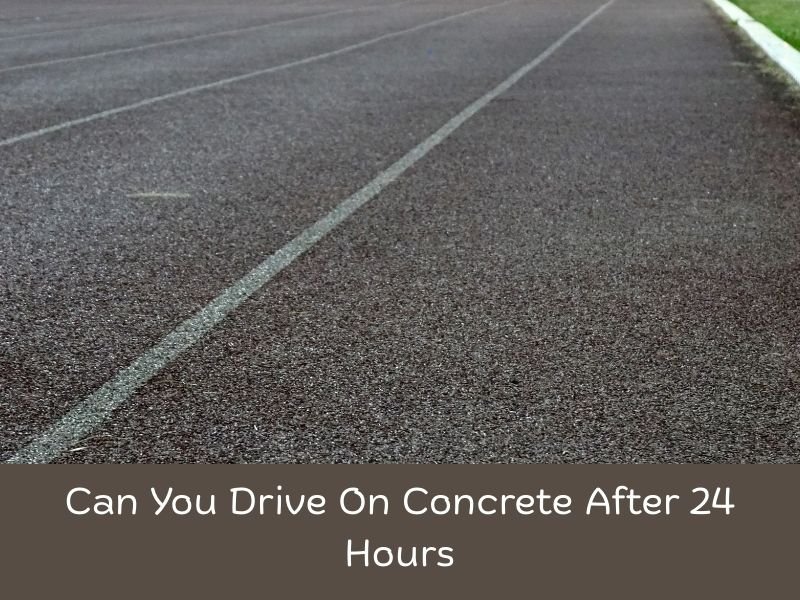Pouring a new concrete driveway or slab represents a major investment in your property’s functionality and curb appeal. Whether you’re upgrading an aging surface or building from scratch, it’s understandable to be excited about putting it to use. A freshly finished slab often looks dry and solid within hours, which can be misleading. Many homeowners make the mistake of assuming it’s ready for vehicles after a day, not realizing that concrete gains strength gradually through a process called curing. While the surface may appear firm, the underlying structure remains vulnerable during the initial days, especially within the first 24 to 48 hours.
Driving on new concrete too soon can result in significant, often irreversible damage. Premature weight from vehicles may lead to surface scaling, cracking, or deep structural compromise that weakens the slab’s long-term durability. These issues not only affect the appearance of your concrete but can also reduce its functional lifespan, leading to expensive repairs or even the need for replacement. That’s why understanding the concrete curing timeline—and following best practices during the early stages—is crucial. By allowing the slab ample time to develop strength, you protect your investment and ensure that your concrete driveway or surface performs reliably for years to come.
Insights to Concrete Life Span
Concrete curing is the process of maintaining adequate moisture, temperature, and time to allow the concrete to achieve its desired strength and durability. This process is crucial because it ensures that the concrete hardens properly and gains the necessary strength to support loads. According to the American Concrete Institute, proper curing significantly influences the final strength and durability of concrete structures.
The curing process involves a chemical reaction between cement and water, known as hydration. This reaction continues over time, with concrete typically reaching about 70% of its strength within the first seven days and full strength after 28 days. Maintaining appropriate moisture levels during this period is essential to prevent cracking and surface defects.
What Happens in the First 24 Hours?
The first 24 hours after pouring concrete are critical. During this time, the concrete begins to set and gain initial strength. However, it is still highly susceptible to damage. Any disturbance, such as walking or driving on it, can disrupt the curing process and compromise the integrity of the slab.
While the surface may appear dry and hard, the internal structure is still developing. Premature loading can cause surface scaling, cracking, and reduced strength, leading to costly repairs or even complete replacement.
Can You Drive On Concrete After 24 Hours?
In short, no. Driving on concrete after only 24 hours is not recommended. At this stage, the concrete has not gained sufficient strength to support the weight of a vehicle. Doing so can result in surface damage, cracking, and compromised structural integrity.
Experts suggest waiting at least seven days before driving on new concrete with a passenger vehicle. By this time, the concrete typically reaches about 70% of its designed strength, making it safe for light vehicular traffic. For heavier vehicles, such as trucks or RVs, it’s advisable to wait the full 28 days to ensure the concrete has achieved its maximum strength.
Recommended Waiting Time Before Driving
The timeline for safely driving on new concrete depends on several factors, including the type of vehicle and environmental conditions.
- Light Foot Traffic: Walking on concrete after 24 to 48 hours is generally safe. However, avoid twisting or dragging your feet, as this can damage the surface.
- Passenger Vehicles: Wait at least seven days before driving on the concrete. This allows the concrete to gain sufficient strength to support the weight without damage.
- Heavy Vehicles: For heavy trucks, RVs, or construction equipment, wait the full 28 days to ensure the concrete has fully cured and can handle the increased load.
It’s important to note that these timelines can vary based on factors such as temperature, humidity, and the specific concrete mix used. Always consult with your contractor for guidance tailored to your project.
Factors That Influence Curing Time
Several factors can affect the curing time of concrete:
- Temperature: Concrete cures best at temperatures between 50°F and 70°F. Extreme temperatures can slow down or speed up the curing process, leading to potential issues.
- Humidity: Adequate moisture is essential for proper curing. Low humidity can cause the concrete to dry too quickly, leading to cracks.
- Concrete Mix: The specific mix of cement, water, and aggregates can influence curing time. Some mixes are designed for faster curing, while others may take longer.
- Thickness of the Slab: Thicker slabs may take longer to cure fully compared to thinner ones.
- Use of Additives: Certain additives can accelerate or retard the curing process, depending on the desired outcome.
Understanding these factors can help you plan appropriately and ensure your concrete achieves the desired strength and durability.
Tips to Protect New Concrete While Curing
Protecting your concrete during the curing phase is essential to avoid premature damage and ensure long-term performance. Here are some practical strategies to safeguard your freshly poured surface:
1. Block Off the Area
Use physical barriers like caution tape, cones, or temporary fencing to keep vehicles and pedestrians away. This not only protects the surface but also ensures that curing isn’t interrupted by accidental contact.
2. Keep the Surface Moist
Concrete needs moisture to cure properly. Spray it lightly with water a few times a day or cover it with plastic sheeting or curing blankets. This prevents the surface from drying out too quickly, especially in hot or windy weather. The Portland Cement Association provides detailed guidance on curing methods here:
3. Avoid Heavy Equipment or Materials
Don’t place storage items, ladders, or tools on new concrete for at least a week. Concentrated loads can cause dents or uneven curing patterns that lead to structural weaknesses over time.
4. Apply a Curing Compound (Optional)
These are chemical sealants that help retain moisture during the curing process. Some are spray-on and can be used in place of water-curing methods. Make sure to choose a compound that aligns with your final finishing goals.
What If You Drove on It Too Early?
It happens—sometimes despite the best intentions, someone drives across a new driveway before it’s ready. If that’s the case, here’s what to watch for and what you can do next:
Signs of Early Damage
- Cracking or Hairline Fractures: These are common when the surface hasn’t developed adequate tensile strength.
- Tire Impressions: Visible wheel tracks can indicate soft concrete.
- Surface Flaking or Spalling: Pieces of the surface may start to flake off, especially near joints or edges.
What To Do
- Consult a Contractor: If you notice any of the issues above, it’s best to call in a professional for an assessment.
- Avoid Further Use: Stop using the area until it’s determined safe. Continued pressure can worsen damage.
- Consider Resurfacing: For superficial damage, resurfacing may restore both aesthetics and strength.
- Full Replacement: In cases of deep cracks or structural compromise, replacing the slab may be necessary.
For more information on diagnosing concrete damage, you can refer to the American Society of Civil Engineers‘ resources.
Conclusion
Driving on concrete after 24 hours is almost always too soon. While the surface may appear dry, the internal structure is still weak and susceptible to damage. Waiting at least seven days for light vehicles—and longer for heavy loads—will significantly improve the strength and lifespan of your concrete surface.
Being patient now can save you from costly repairs and replacements later. By understanding the curing process, using proper protection techniques, and avoiding premature use, you’ll ensure your investment in concrete pays off for decades to come.
FAQs
Can you walk on concrete after 24 hours?
Yes, most concrete is safe for foot traffic after 24 hours, but it’s best to walk carefully and avoid dragging items or pivoting sharply.
Is 48 hours enough before driving on concrete?
No. Even after 48 hours, concrete is still gaining strength and should not support vehicle weight. Wait at least 7 days for light vehicles.
How can I speed up concrete curing safely?
Use curing accelerators approved by your contractor, maintain proper moisture, and consider insulated blankets in cold weather. Always consult a professional before modifying the curing schedule.
Can rain affect newly poured concrete?
Yes. Rain can wash out surface cement, cause uneven curing, or lead to surface defects. If rain is forecast, cover your concrete with a waterproof sheet within the first few hours.
Final Word
The key to a strong, long-lasting concrete surface is allowing it the full time it needs to cure. As tempting as it may be to use your new driveway or parking area right away, holding off for even a few more days can make all the difference in avoiding cracks, dents, and expensive repairs.
For further guidance, check with local building codes and refer to the American Concrete Institute’s curing guidelines.
If you have a specific situation or are unsure how long to wait, always consult with your concrete contractor or a licensed engineer to get advice tailored to your environment and slab design.






